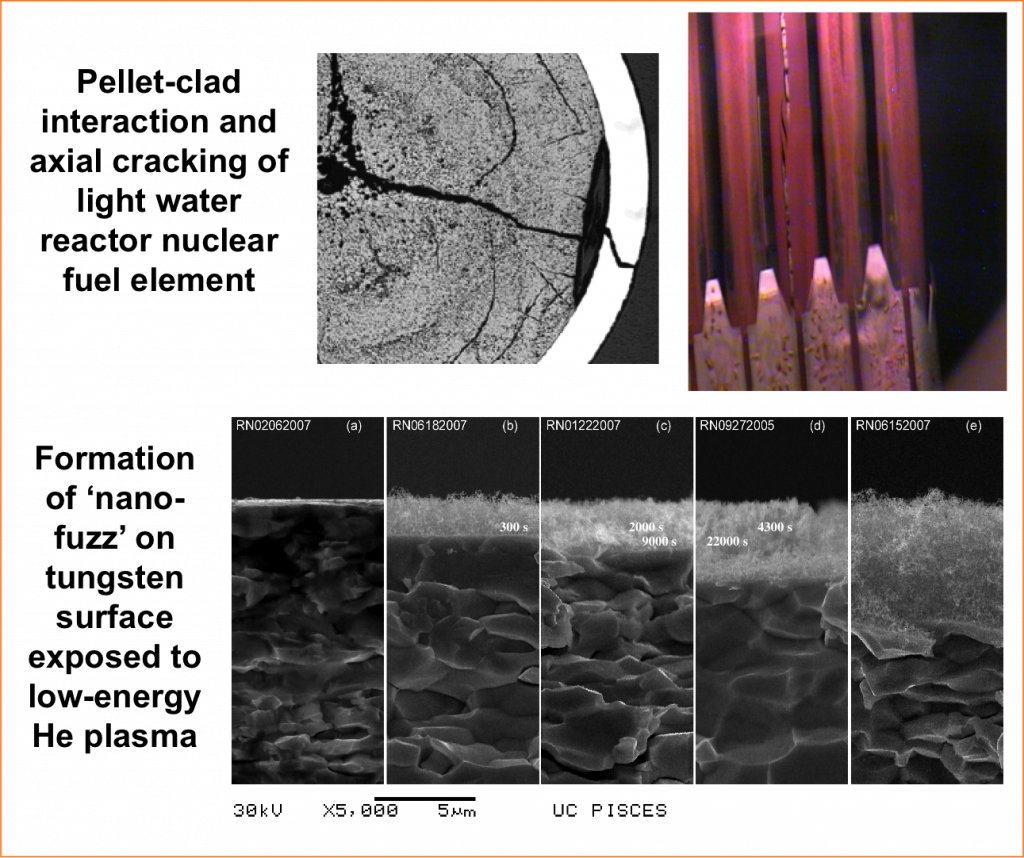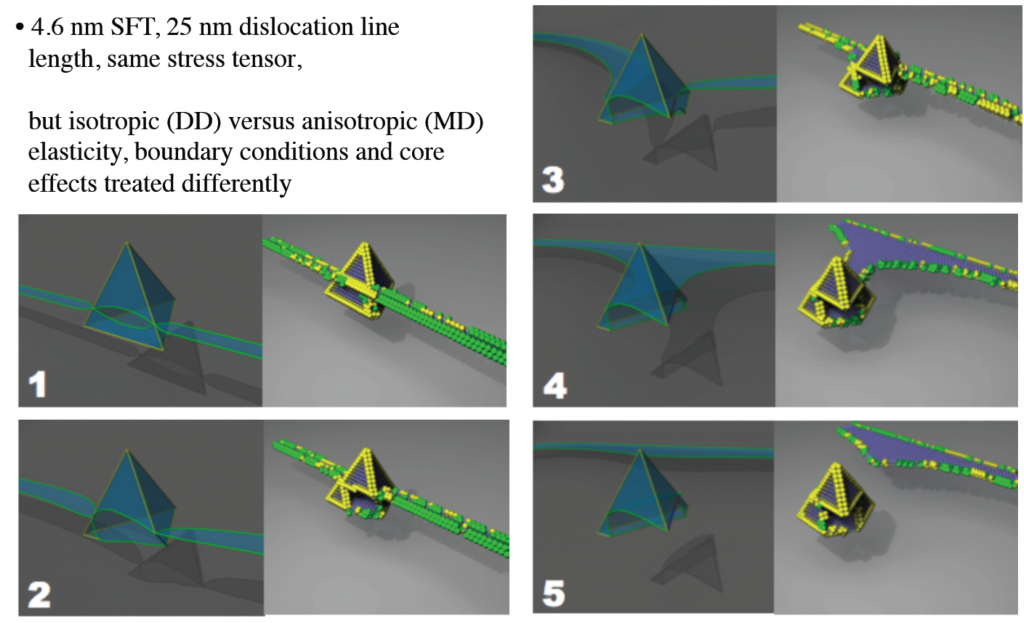Research Group Objective
Improve knowledge of the dynamic evolution of materials behavior in extreme environments to improve predictive performance (lifetime) models and develop advanced, higher performance materials for current nuclear reactors and future fission and fusion power
Research approach 
Integrate computational multiscale materials modeling with experimental processing, environmental exposure and micro-structure & property characterization to elucidate the dynamics of materials
Exposure to neutrons and corrosive coolants degrades the mechanical performance of structural materials through complex, inherently multiscale processes,and ultimately impacts the economics and safety of current & future fission power plants:
- Irradiation hardening and embrittlement/decreased uniform elongation (< 0.4 Tm)
- Irradiation (<0.45 Tm) and thermal (>~0.45 Tm) creep
- Volumetric swelling (0.3 – 0.6 Tm)
- High temperature He embrittlement (> 0.5 Tm); Specific to fusion & spallation accelerators
- Stress corrosion cracking and fatigue cracking
Comparison between the Modeling and in-situ TEM measurements
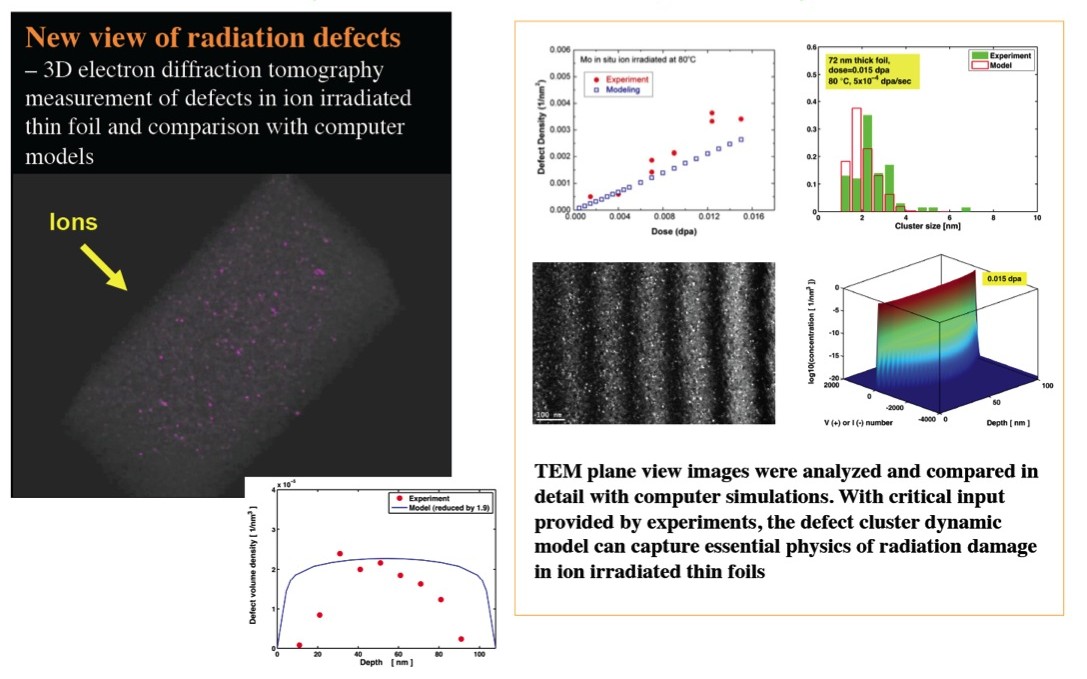
*In collaboration with ANL, Kirk, & Li
Discovery Science to Predict Plasma-Surface Interactions
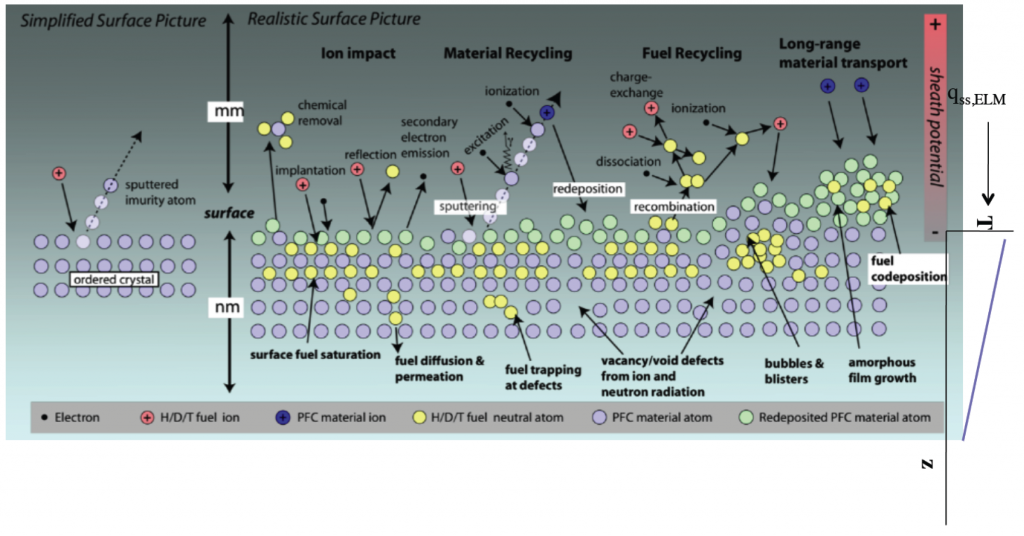
*Wirth, Nordlund, Whyte, and Xu MRS Bulletin 36 (2011).
MD/DD Comparison of Screw Dislocation-SFT Interactions
Marian, Martinez, Lee and Wirth, J. Mater. Res. 24 (2009) 3628
Isotropic Plasticity Model for Irradiated Models
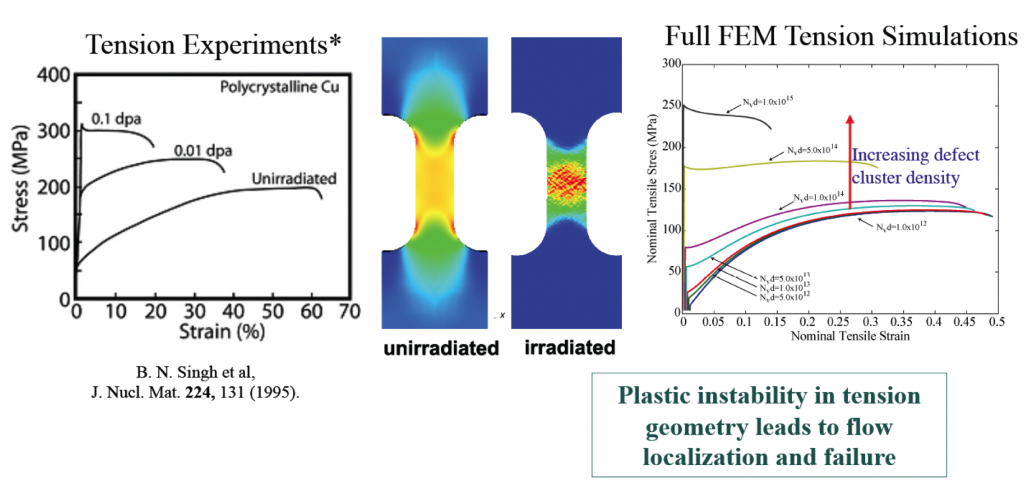 *Arsenlis, Wirth and Rhee, Phil. Mag. 84, 3617 (2004).
*Arsenlis, Wirth and Rhee, Phil. Mag. 84, 3617 (2004).
Are Radiation Resistant Materials Possible?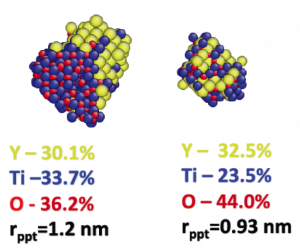
Nanostructured-ODS alloys (NFAs) are:
- Based on oxide dispersion strengthened (ODS) materials (MA957, MA956, PM2000,Glidcop…)
- Mechanically alloyed or internally oxidized
- Dispersoids impede dislocation motion (and grain boundary sliding and growth) at elevated temperatures (Y2O3, TiO2, ThO2, Al2O3…)
- Low solubility, high thermal stability dispersoids
- High creep strength
- Excellent corrosion resistance
- Radiation tolerance strategy uses the high
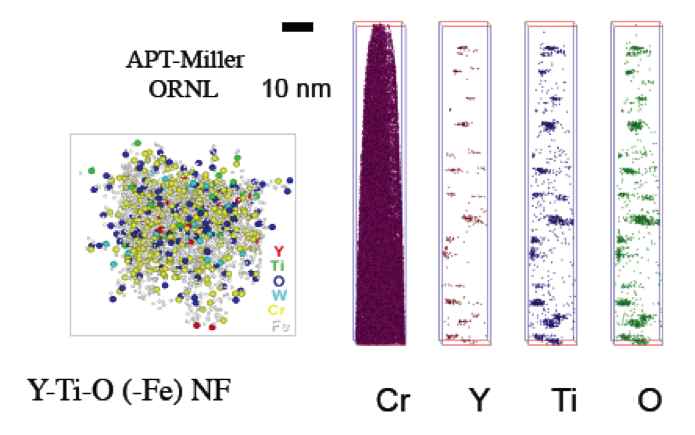 Nano Feature (NF) sink strength to trap (getter) He (in fine bubbles) and vacancies (to enhance self-healing of damage by recombination with self-interstitial atoms)
Nano Feature (NF) sink strength to trap (getter) He (in fine bubbles) and vacancies (to enhance self-healing of damage by recombination with self-interstitial atoms)
*Odette, Alinger and Wirth Annual Review of Materials Research 38, 471 (2008).
*Demkowicz, Bellon and Wirth MRS Bulletin 35, 992 (2010).
Summary of Ongoing Research Activity
Ongoing Projects
-Development of advanced, nanostructured intermetallic alloys for jet turbine applications – can nanoscale Y-Ti-O precipitate clusters be introduced in NiAl alloys?
-Fuel performance and fission product evolution in oxide nuclear fuel and cladding / TRISO fuel coatings, and metallic nuclear fuels
-Development of intermediate band-gap semi-conductors for gamma-ray spectroscopy
-Reactor pressure vessel embrittlement concerns for reactor lifetimes past 60 years
-Fundamentals of radiation-induced defect interactions with material interfaces
-Irradiation effects in structural materials for future fusion and fission reactors
- Models of microstructural evolution, measurements of irradiated microstructures, fundamentals of point defect cluster interactions and sink strengths , structure and composition of nanoscale precipitates, dislocation – obstacle interactions, Helium – defect interactions and Helium bubble nucleation kinetics
- Atomistic-based models of plasma – surface interactions to determine the mechanisms by which mixed Deuterium/Helium plasmas impact Deuterium retention, surface modification (fuzz formation vs blistering) and impurity generation
Pending Projects
– LWR fuel performance issues – pellet-cladding-interaction and Zr growth (Consortium for the Advanced Simulation of LWRs, CASL)
– Modeling and experimental characterization to develop improved radiation growth models in Zr
– Development of modeling techniques to bridge timescales of microstructure evolution
This work is partially supported by the National Science Foundation, the U.S. Department of Energy, Office of Fusion Energy Sciences, Office of Nuclear Energy, and Office of Basic Energy Sciences, the U.S. Department of Homeland Security, Idaho National Laboratory, Oak Ridge National Laboratory, and Lawrence Livermore National Laboratory. This work is performed by a large, interdisciplinary research group involving undergraduate and graduate students, post-doctoral researchers and research scientists, as well as an extensive network of collaborators.
